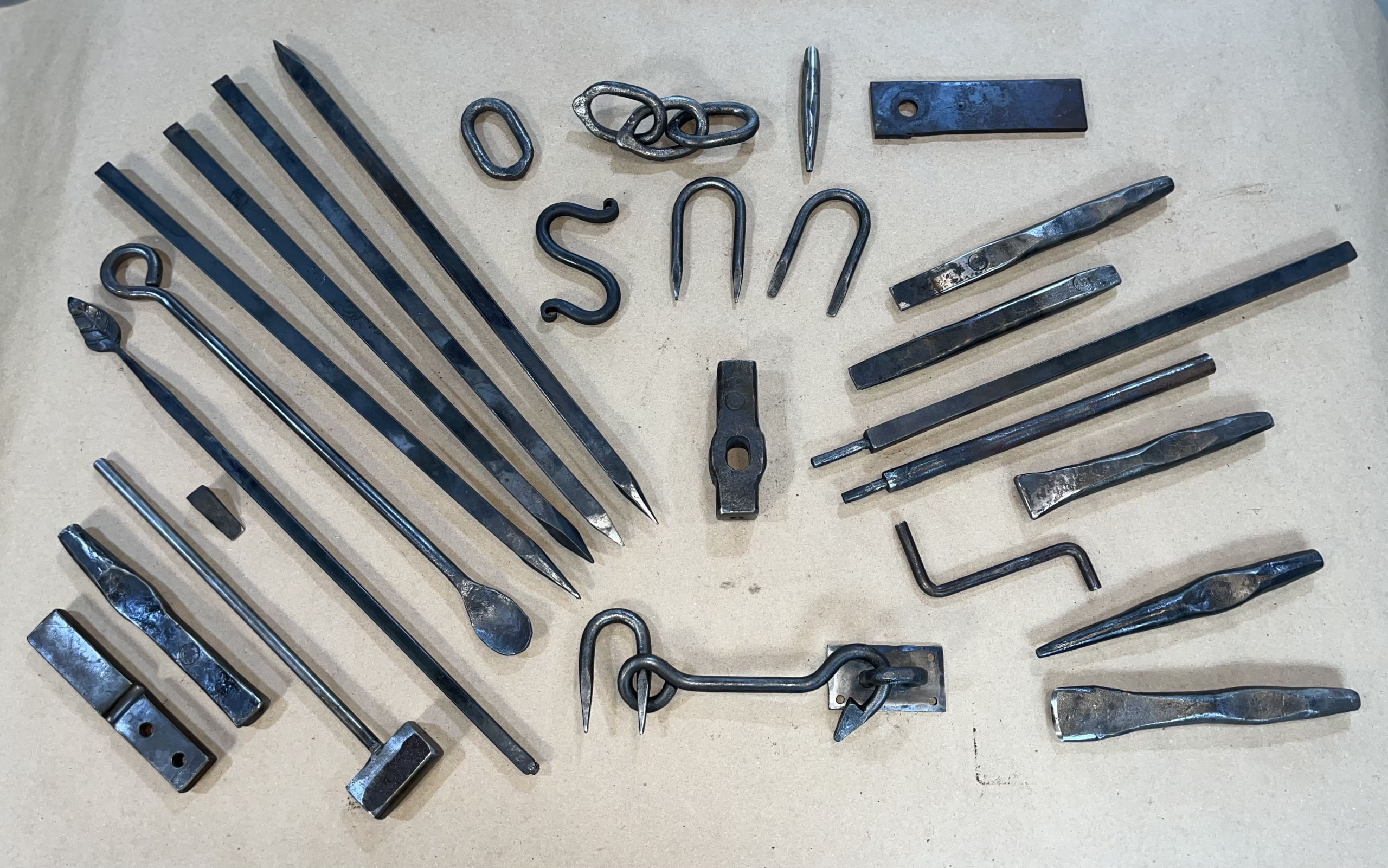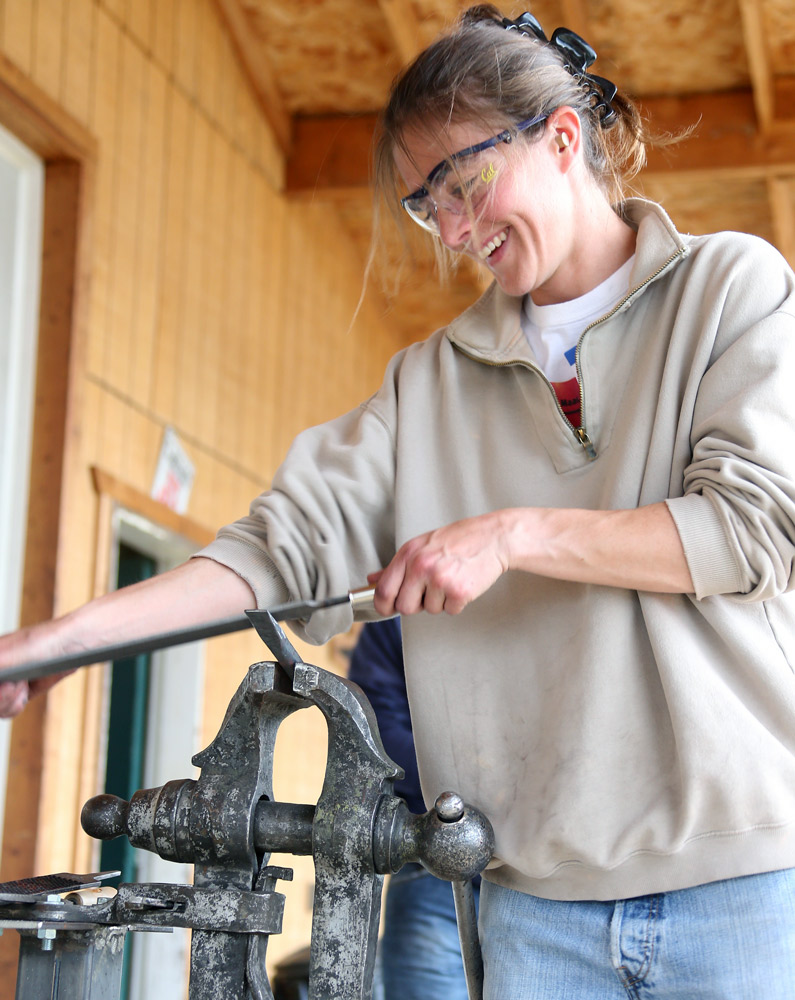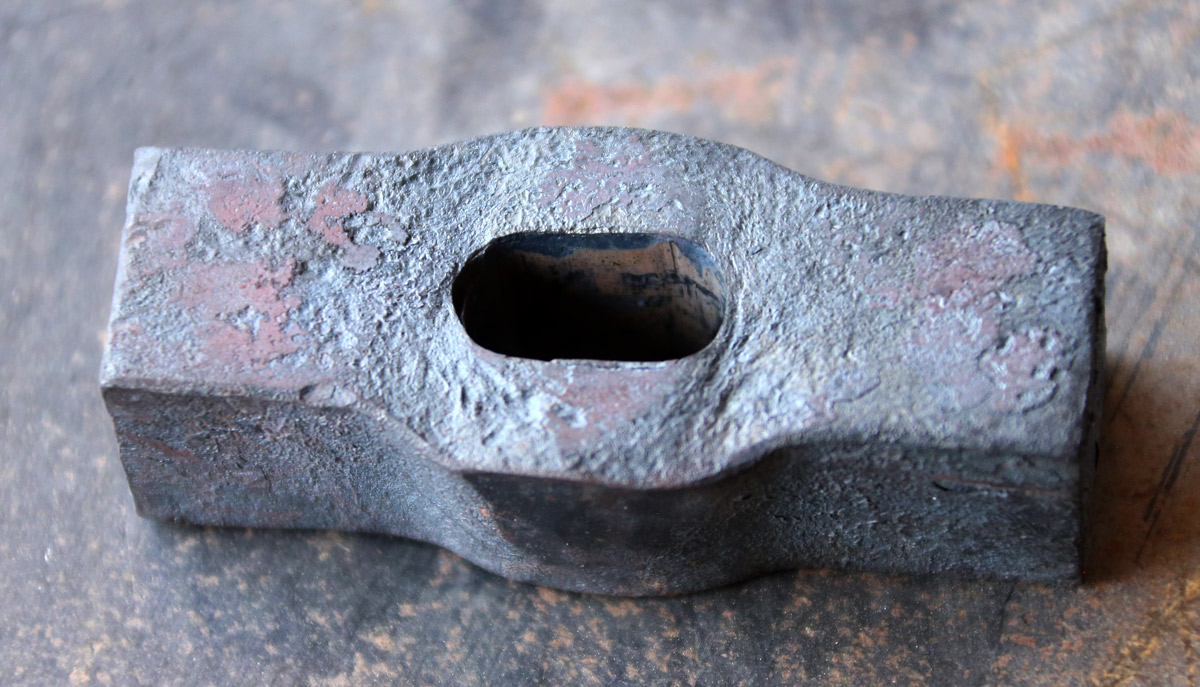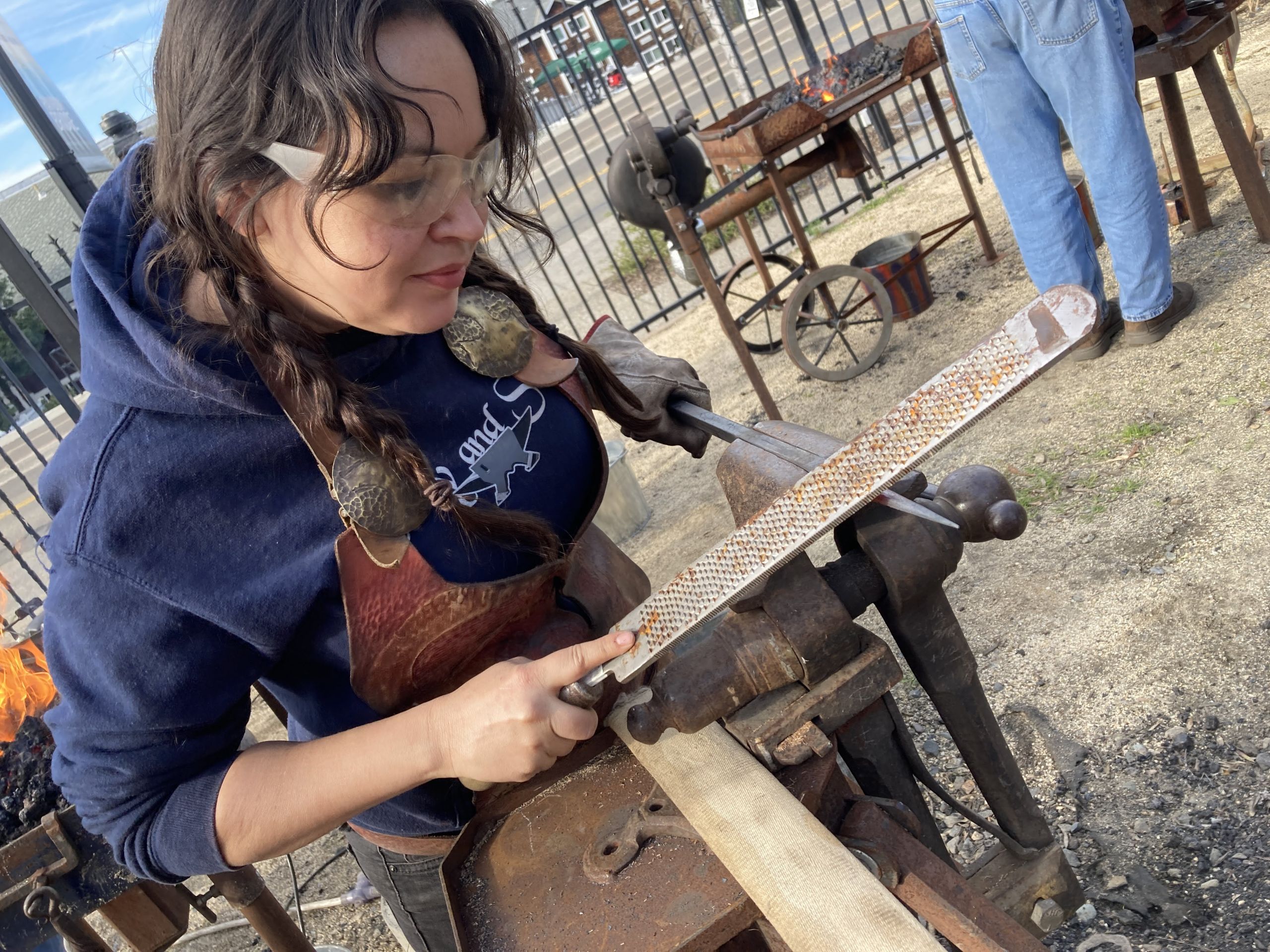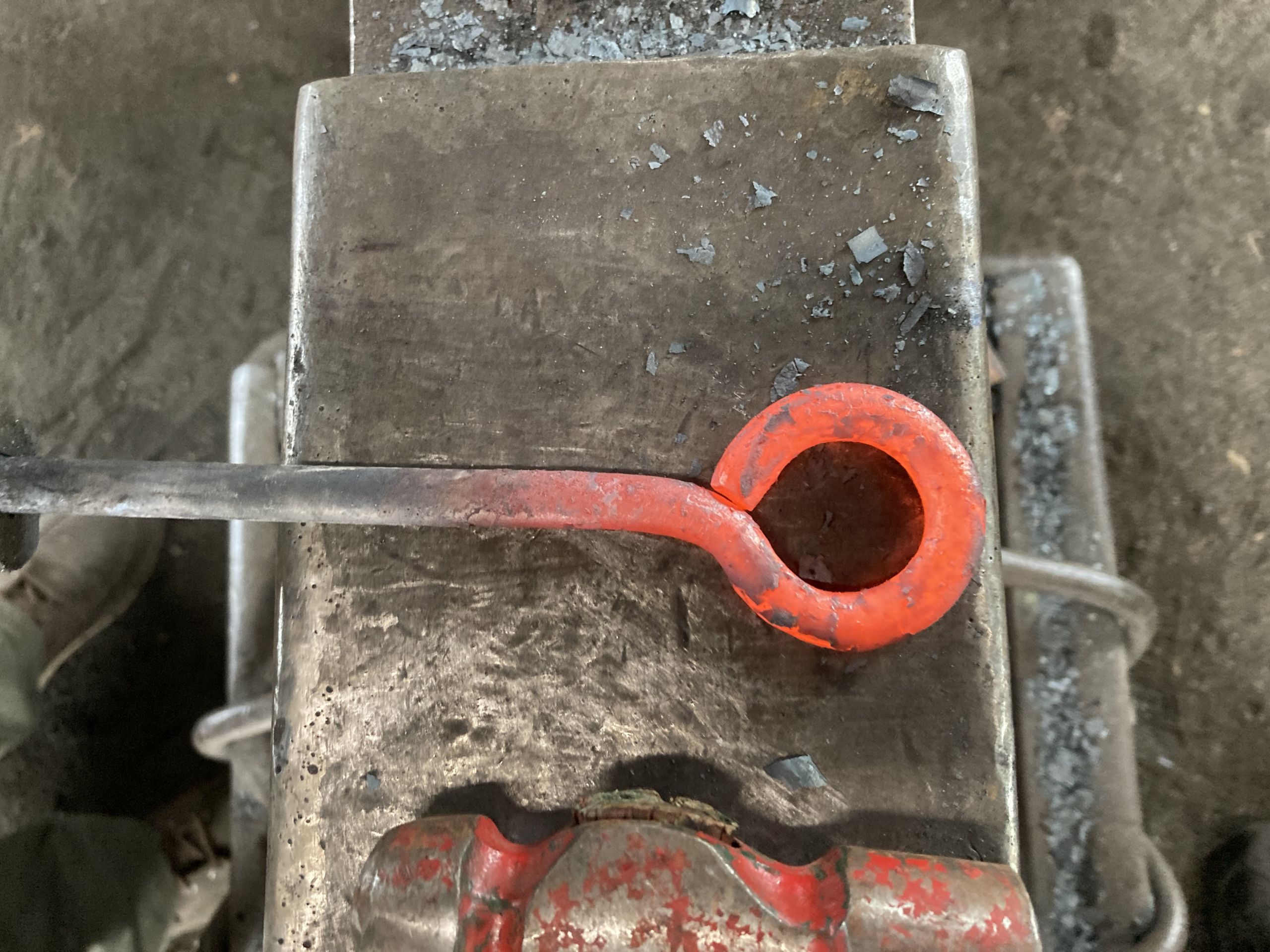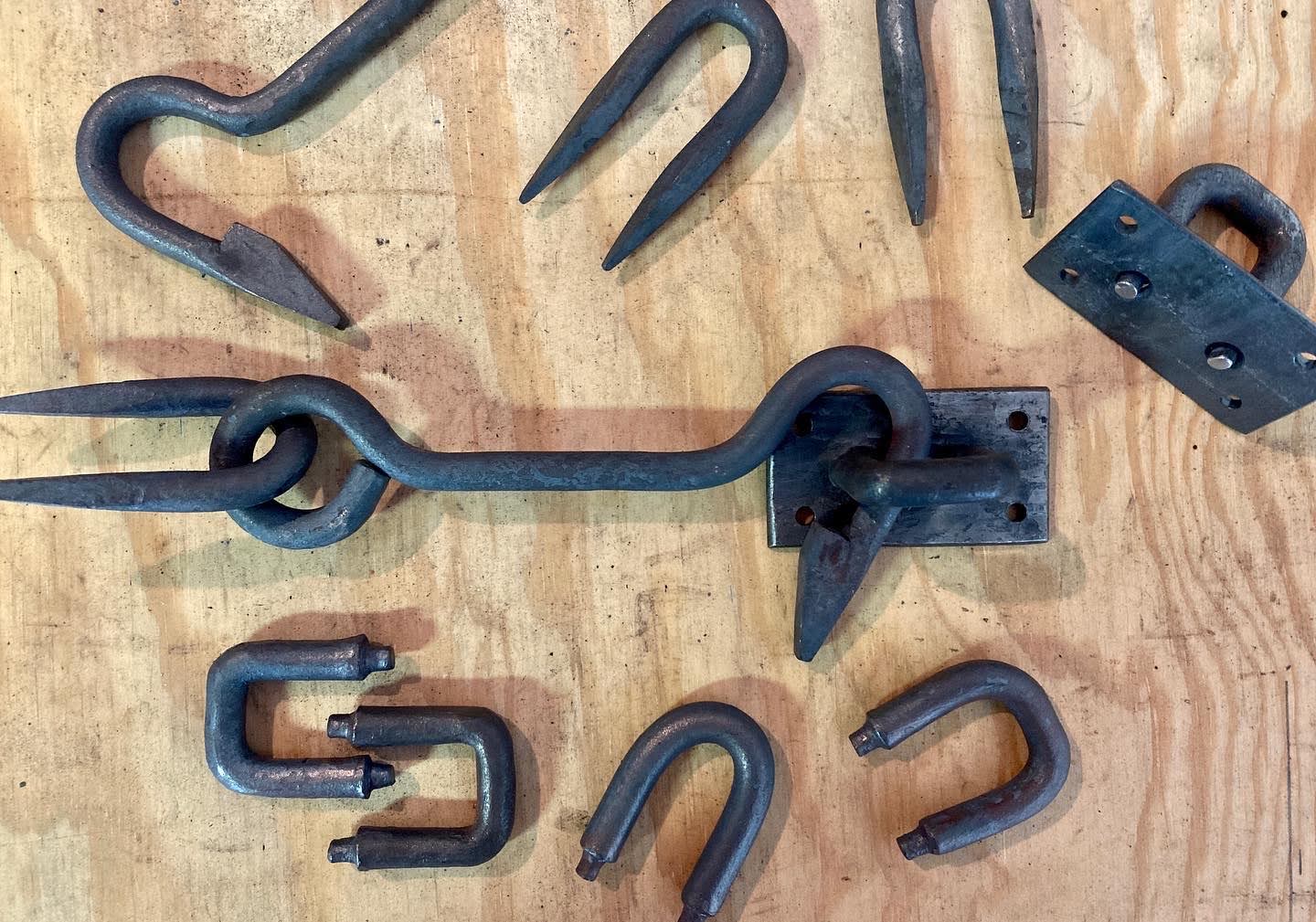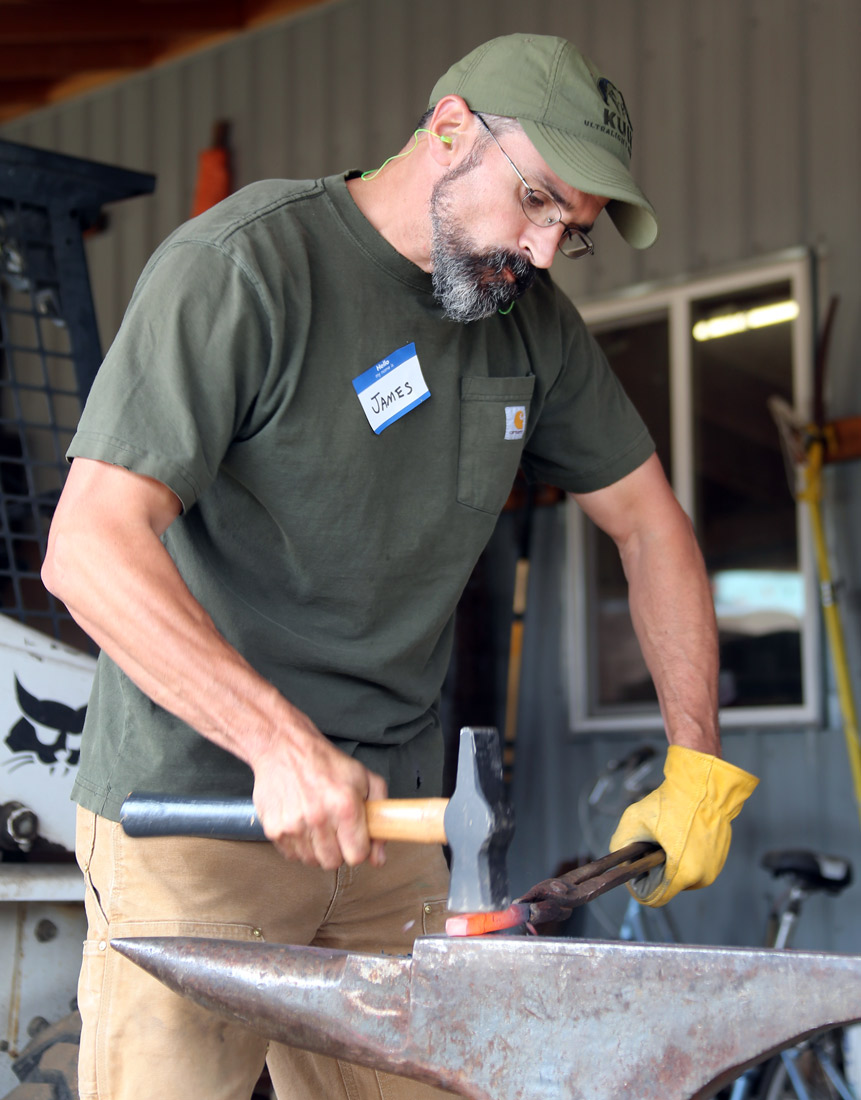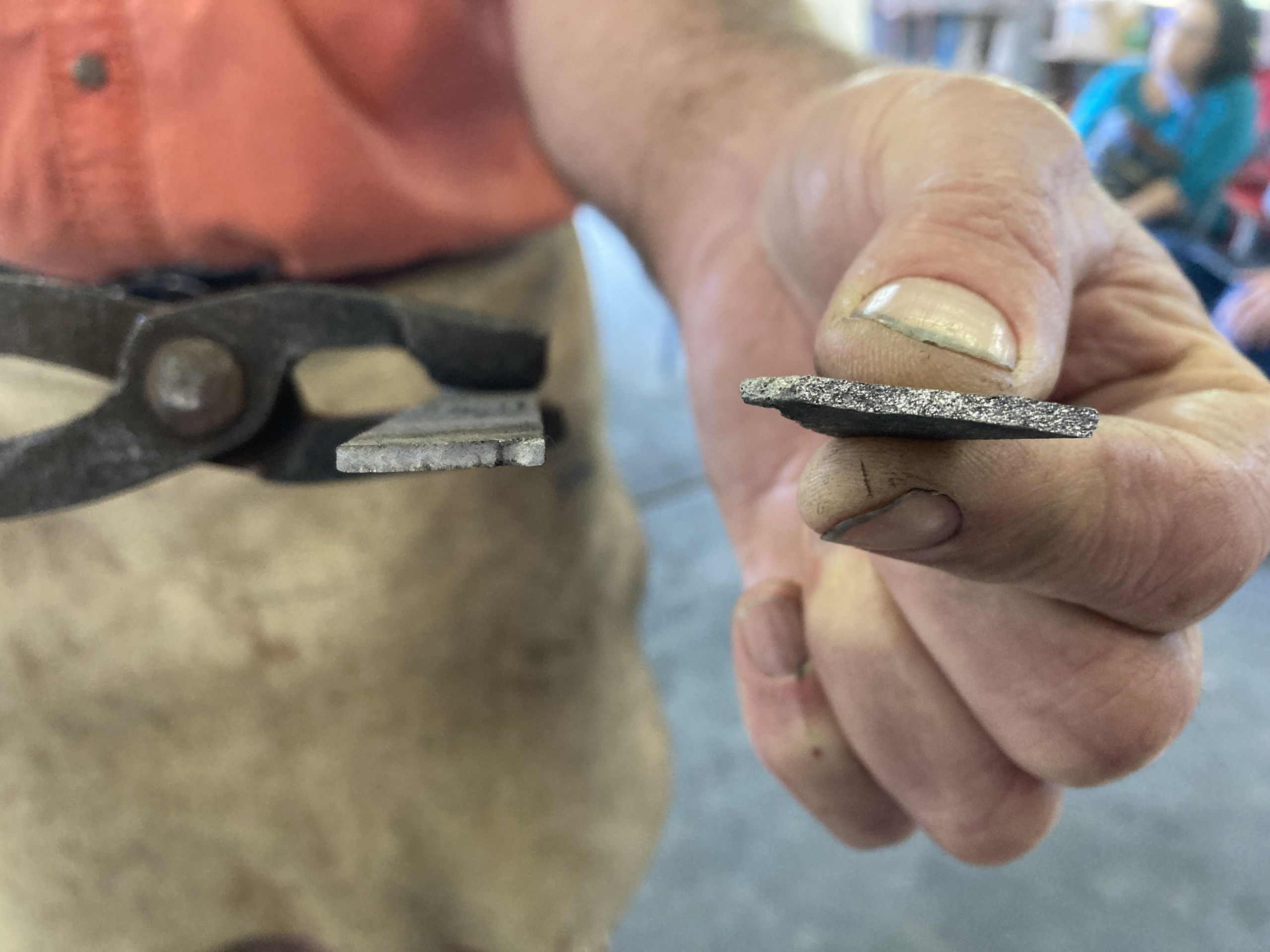National Curriculum Level I
The National Curriculum offers a step-by-step progression through three levels of fundamental blacksmithing skills. Certification signifies that a smith has demonstrated mastery of a specific set of skills, increasing in complexity with each level: Level I (beginner), Level II (intermediate), Level III (advanced).
Level I is the first level of the curriculum and is designed as a guide through beginning blacksmithing techniques. Starting with safety, Level I then moves into core skills and techniques, including tapering, bending, forging and heat-treating hand tools, punching and drifting, basic blacksmithing math, forging to dimension, forge-welding, and creating tenons. It culminates in a final project, the Gate Latch, designed to test the student on these skills.
Upon completion of Level I, students will have confidence in the most essential blacksmithing skills and be able to forge a wide variety of projects. The program is designed to provide a solid foundation within the craft.
To earn certification, the student needs to successfully complete the projects and techniques as outlined in the checklist in the Level I Student Packet. The checklist allows students and instructors to keep track of progress. ABANA will accept the recommendation from an Affiliate’s Education Program Chair or the judgment of a Certified Level I Instructor that qualifies a student as having passed Level I.
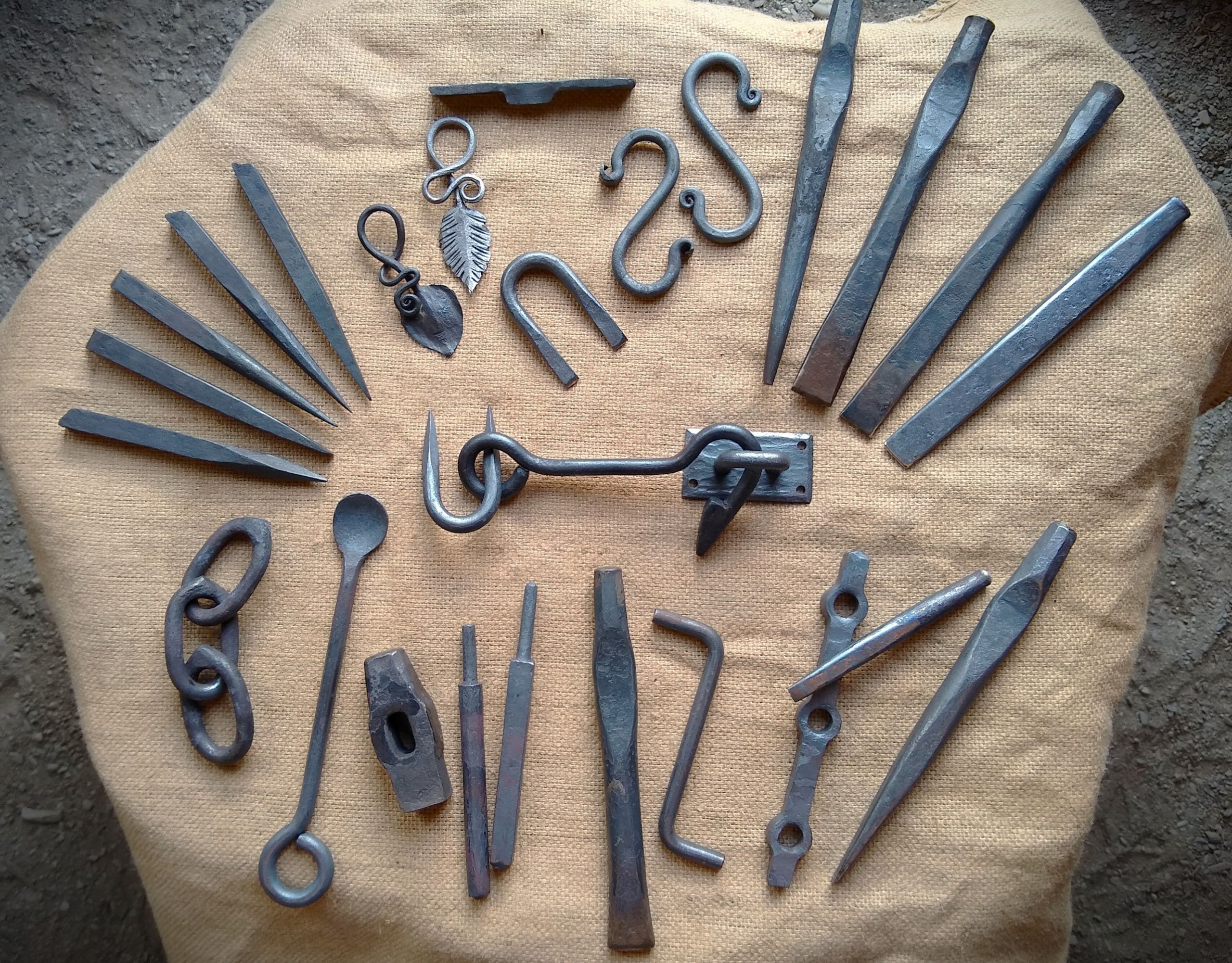
Anyone may participate in the curriculum as a way to develop and improve their skills. Certification does require ABANA membership.
It is expected that Level I will take the novice smith approximately 6 months to complete, with time spent developing skills.
Note: If you’re using Safari and experiencing difficulty viewing the documents, try using another browser, such as Chrome.
Heat Treatment Basics – Level I requires students to understand and demonstrate basic heat treating. This chart is useful for determining the appropriate temperatures.
CoSIRA Book: The Blacksmith’s Craft – In this first in a series of three books, basic blacksmithing skills are presented with instructions and photos. The book provides details on several of the Level I projects and techniques. It is available as a free downloadable PDF. Or you may purchase a physical copy from Amazon.





